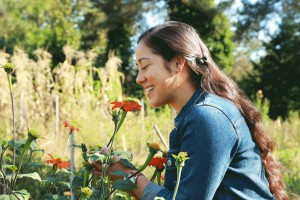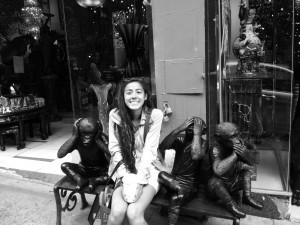Felicitas: Taking The Leap
Each summer for the past 10 years, I have asked a group of dancers where they are with dance. I leave the question open-ended in order for them to answer however it resonates personally. My goal is to create a yearly check-in to chart how these dancers evolve with time. This project began in 2013 when they were still in high school. Below is Felicitas’ yearly update, as well as her shifting perspectives over the past 10 years. –Emmaly Wiederholt
2022: age 24
It’s been 10 years since I first came to the Bay Area. After spending many spotted seasons in between here, Seattle, and wherever else in the world I was, I finally made the choice to return and plant myself in this quintessential creative metropolis. I was very particular about this decision; I felt that out of any city in the world, this was the one I could see myself rooting into, one that would allow me to grow artistically and professionally while fulfilling the many other realms that encompass my life. I didn’t expect much to happen in this first year back. I was expecting myself to immerse slowly, quietly. But after almost two years of isolation (and living room dancing, which is great, but damn. s p a c e), my desire to be deeply involved in the diverse creative communities that this city boasts became so engulfing that it took on a whole path of its own.
Last spring, I was honored to work with dance filmmaker Conni McKenzie and sound designer Jaime Serra dos Santos on our first ever commissioned dance film, Lungs of the Earth, which premiered in April for USF’s Performing Arts & Social Justice 20th anniversary festival. In the midst of lockdown, we hustled over six weeks of intense Zoom rehearsals, late-night brainstorming calls, and an intense four-hour film take to create what is now a hybrid exploration of the social-political inferno and environmental crisis consuming the Amazon region of Brazil and its Indigenous communities. This all-consuming process was invigorating and exhausting, giving me a first glimpse into what a professional life as an artist might look like. I liked it.
The following months we were invited to participate in a few panel discussions as part of USF’s Thacher Art Gallery Fall 2021 Exhibition All that you touch. As a first time presenting artist alongside these incredible mid-career (and environmentally-focused) artists, the conversations of our creative output really cemented the role and responsibility I wanted to take in making socially-engaged work that extends beyond the screen or stage. There must be more to this than just the performance. I felt strongly that there was so much more to dig into within this work, not just the piece itself, but the granular details surrounding it that came from hours of researching and conceptualizing brutal facts and realities that inspired the piece. People must not walk-away only having seen something; they must also be filled with reactions, curiosities, disturbances, and ideally, a desire to do something about it. My dance practice is not just one of artistic expression or physical movement; it is a social responsibility to create, a political act that requires more of me than just my body. It requires every part of my brain and heart to be in congruent action; all my creative and critical thinking in concert; my acceptance and refusal of what is; my pure existence and whole participation in the human experience. I just could not look at dance so simply anymore, I needed more from it.
This is when things started to shift.
Most of last year was a balancing act between this half-artist, half-9-to-5 lifestyle I was maintaining. Echoes of scarcity mentality and professional projections (from myself and others) made me hesitant to ever consider a fully independent freelance lifestyle. It’s too risky, the economy, the pandemic, etc. It took quitting three jobs and moving three times (third times the charm, right?) for me to realize that by effect, regardless of if I was ready or not, I was becoming that independent freelance artist. At the start of the new year, I was contracted to perform with Kinetech Arts and Lenora Lee Dance, co-facilitating workshops with my dear friend and mentor Jennifer Bury (a DSP Certified Movement Therapist), managing the Community Engagement Residency with Bridge Live Arts, and taking on client work as independent contractor for small arts organizations. There was no choice but to “take the leap” and fully commit to the projects and people that were making this lifestyle possible for me. And once I did, which was incredibly freeing and terrifying, I was reminded of what I felt so strongly earlier: I needed more from it. I needed dance to engulf me completely. I needed to give it all my existence and participation, in every way I am capable of, onstage and off. It is with pure gratitude that I have found myself in this position, where dance is now something I can professionally pursue and sustain myself with while getting to engage in excitingly different, coexisting parts of the field.
Right now, to maintain this active part of my life, it feels pertinent to employ the practice of artistic discipline, commitment, and patience throughout the processes and work I’m a part of. There have been many beautiful developments and surprising moments this year, and yet that deeper craving for something beyond the limitations of dance as performance, as product, remains. I aim to continue pushing my capacity for deeper meaning and impact beyond the confines of a studio, theater, or any designated space for that matter. I want to research, observe, and conceptualize the movements in the fabric of our society; our problems; our dreams; our complicated and undeniably interwoven lives until there is something physically shifting in and around me. It feels inevitable that my work will constantly challenge the parameters and functions of this field, because I’m not satisfied with the status quo. There is more to this than what we see. And wherever that leads me next, that’s the path I’m going on.
My website: felicitasfischer.crd.co
Artists For Justice: www.artists-for-justice.com
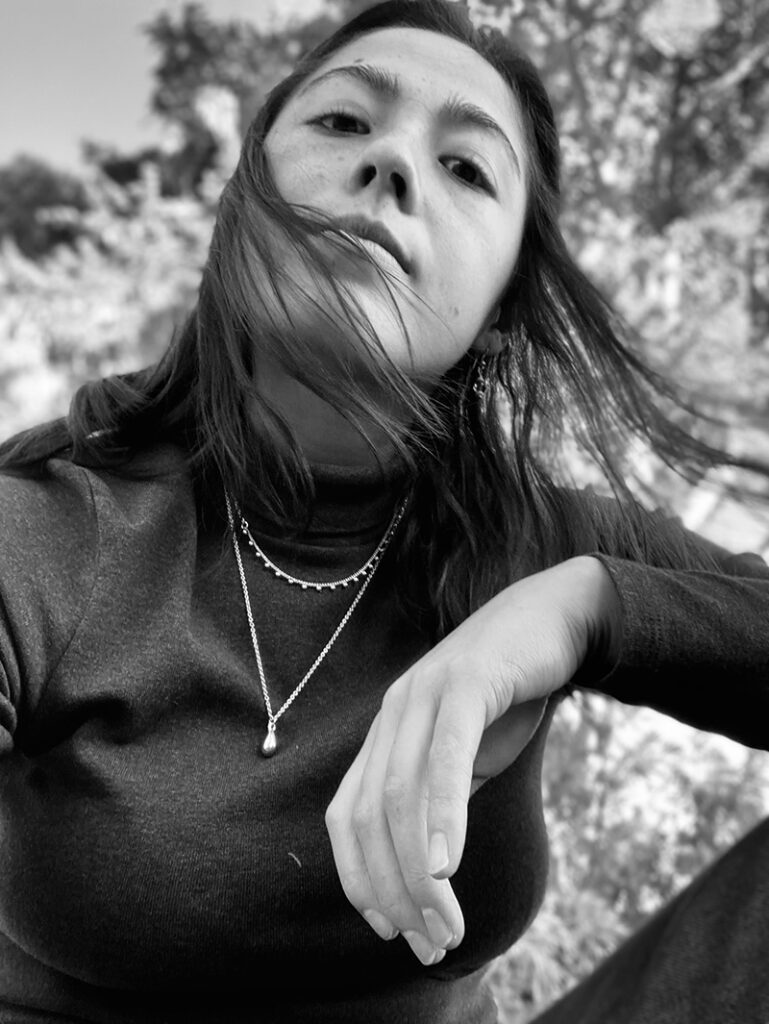
Photo courtesy of the artist
2021: age 23
Over the past year, dance has become even more of a deeply intimate and sacred practice of mine; more than I’ve ever imagined it could be. As the world fell apart – both the one around me and the one I had carefully self-constructed – it was the only thing I could return to day after day to deal with the incessant pain, sadness, suffering, grief, disappointment, fury, devastation, fear, and unwelcomed trauma that barged into my life without hesitation or mercy. Like many others, the confinement to a singular space and prolonged social isolation revealed the truth about my mental and emotional stability, making dance not just a preferred method of coping, but essential to my sanity if I were to make it through. Dance became my primary source of healing amidst the pain I witnessed, caused, and experienced in the year 2020.
What once were empty holes of my studio apartment quickly became discovery spots to find new ways of moving, grooving, feeling, existing, and being amongst the uncomfortable; the harrowing; the heartbreaking. Hot tears that collapsed on the floor were met with steady feet, grounding firmly through each metatarsal and muscle. Deep sighs shakily released from my lungs were caught by soft subtle hand gestures, grasping the thin air around me. Pounding headaches and clenched jaws turned into swinging arms and spinal releases. Tense shoulders became ten different ways to twist and turn around my furniture (without knocking things over). Heavy eyelids became hips hips hips gyrating, shaking, sashaying, swaying. It was the saddest, most liberating dance party of one, for one, and no one else.
This daily practice of returning to dance with my head and heart weak taught me how to find healing in myself, in my movement, despite the most calamitous circumstances. My 10 x 10 ft. space may have been small, but dance teleported me to an expansive state where I could feel everything to its fullest extent. It gave me new kinesthetic vocabulary to express myself without filtering, downplaying, or masking the severity and depth of my experiences. It gave me moments of much needed relief and joy when there was so little. Approaching dance through this therapeutic lens transformed the way I understood the practice, not just as a performative act or artistic technique, but as a powerful healing method with untapped potential. I’ve come to see dance as a portal to the most vulnerable and real parts of myself. Its transcending power can reveal such deeply hidden, hurting, and raw wounds that often manifest themselves out in the real world, adding to the chaos that already exists. But by letting dance take us to those places, those dark tender places, and exploring the potentiality of movement as a healing practice, we might be able to find healing in ourselves in ways we could have never imagined.
This is what gave me the strength and courage to make certain strides in my career, my practice, and my personal life after a year like 2020. Since then, I moved back to the Bay Area; choreographed my first commissioned piece; joined a local studio as a new instructor and admin; revamped the Artists For Justice collective and launched our first merch line; reconnected with friends and mentors who have deeply impacted my dance journey; and reentered the dance community with excitement of finally, finally taking class again. There is so much yet to discover about my relationship to dance and how it continues to shape my life, but I will always remember this past year as one of the most formative to my understanding of dance as an intrinsic form of human expression, and therefore also, healing.
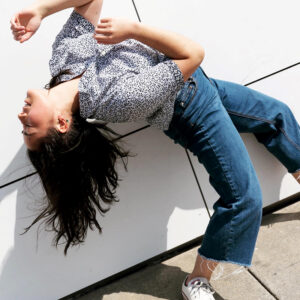
2020: age 22
Around this time last year, the triumphant feeling of graduating with a BA in Performing Arts & Social Justice (PASJ) had just started wearing off as I lay down on an airport bench in Lima, Peru. Flashing memories of the last bow onstage; an encouraging comment made in passing; my professor’s sweet smile as I grabbed that costly piece of paper – it was a peak among many valleys that was etched in my memory as one of the biggest accomplishments of my life, but left me with bittersweet affection. As much as I was heartbroken to leave the established (and incredibly supportive) network of creative peers, professors, and mentors who transformed my understanding of dance in academia and the socio-political realm, I felt so plugged in to the safety net of a private, aristocratic university that I lost touch with the real world I had seen before. So, I moved to Argentina, where it all began.
A city brimming with creative energy, Buenos Aires was a place of artistic awakening for me. It’s unique heartbeat of social activism mixed with the diverse talents of artistas urbanos make for daily extemporaneous live performance and public artwork that cleverly layers in social political commentary and redefines Argentinian culture, history, and identity in the 21st century. The migrant musician bouncing from one subway train to another is not just playing any set of songs; two young males swiveling in the plaza are not just dancing another tango; the graffiti artist enlivening the brick and concrete of a villa is not just creating any mural – they are exemplifying the inseparable connectivity of art and advocacy, poetry and politics, movement and mobilization, a quartet and a quarantine. As I watched their creative play pop up throughout the city, I began to admire, and somewhat envy, the way they fearlessly claimed and displayed their artistry (without needing a degree from a second-tier university to do so). I observed the way they used their art for social change and advocacy more often than for staged performance or acclaim. I watched them return to the same spots every day with the same relentless creative energy, regardless of if people stopped for them. I started to question: what does it mean to be an artist in a world that demarcates “street-art” from real art, valued art, celebrated art, stage worthy art? Who decides what art gets noticed, praised, covered by the media, and funded? How has the artistic world developed its own hierarchical and bureaucratic processes of what it means to be an established and esteemed artist?
That costly piece of paper was staring back at me now, asking me the very question I had been chasing though years of dedicated dance training, taking on performance opportunities, fervently signing up for intensives and workshops, and even pursuing a degree in Dance – what does it mean to be a dancer?
Does it mean taking four to five technique classes a week? Does it mean becoming fluent in Labanotation or getting certified in a variety of movement practices? Is it dutifully preparing for and participating in the competitive audition season for a spot in a company? What about being fully immersed in the dance community with your hands in multiple projects at a time? It is performing for the sake of being seen? Is it a degree that claims you completed a set of curricula laid out by other experienced dance educators, choreographers, and academics? Is it participating in this achievement-centered social construct built on having years of high-quality training, impressive physicality, renowned company status, diligent performance record, or expertise in the academic dance field? Are these the things that define a dancer?
From what I’ve seen in my 17 years of navigating the dance world, the road to “success” seems to be paved by the pursuit of these questions. But here, the road is no longer made of clean-cut marley or sprung floors; it is made out of dirt and stone, scattered with greenery and waste, a crooked pathway leading to an open clearing tucked away in the folds of the earth with nothing but some trees and a few sleeping dogs nearby. And yet, people still gather to sing, dance, and play.
My time in Argentina reminded me what it means to be a dancer in the simplest form. It is a way of relating to; we see the world through movement and understand our relationship to the external through our inner and outer sense of physicality. It is a way of being with; being flexible with our minds, bodies, and hearts as we navigate the world and its shifting realities. It is a way of sensing; we feel the world and we feel how it moves us. It is a way of communicating; we speak this kinesthetic language, often because official languages lack the verbiage we seek to express the most undefinable human experiences.
I brought this reminder with me when I moved back to Seattle in January. As soon as the pandemic hit, I saw it as a universal sign to return to that simple form of dance; one that requires no internet, no Instagram live classes, no virtual dance jams – just me, my body and space. Despite the challenges the pandemic presents, I’ve been cherishing these last few months of physical introversion, of returning to myself. It feels like a homecoming – to my body, to my relationship with movement. It feels like dancing in an open clearing with nothing but the trees and sleeping dogs nearby, except it’s my living room and my dog is watching me curiously from the couch. The pandemic has brought us all home, literally and figuratively, which we all might need as a reminder that our artistic craft is not dependent on our achievements or external pursuits within the dance world. It is within ourselves and is waiting for us to come home.
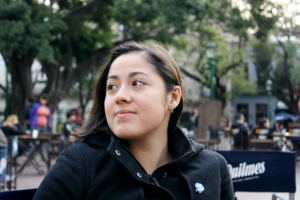
2019: age 21
This past May, I graduated from the University of San Francisco with a BA in Performing Arts and Social Justice with a concentration in Dance. Don’t worry – I’m still trying to figure out what that means too. Besides coming to appreciate the academic rigor of dance, this program provided me with the most demanding and intimate experience of physical training, choreographic processes, and artistic-development within myself. Between dance classes and late-night rehearsals, I had several “aha” moments that reaffirmed that this was exactly what I want to be doing. Long gone are the days of wondering whether I am meant for this kind of work; now it’s a matter of figuring out how to pursue dance as a career and a life-long practice while continuing to explore the complexity and intricacy of what it means to be a dancer.
This was also the first year that I created original work and presented it to the public. Stepping into the choreographer’s shoes was an incredibly humbling experience in which I realized how enigmatic yet self-revealing the choreographic process truly is. Albeit the hours of corporal investigation, choreographic experimentation, and surely some mental tribulation, by the time we performed onstage, the piece evolved into something beyond ourselves, something we couldn’t have expected; it became its own entity, we were just there to embody it. As someone who had never created a 10-minute piece involving other dancers or even basic lighting cues, I quickly learned that the power to create was a responsibility that needed to be met with equal parts curiosity, receptivity and consistency. Like a child, creativity needs room to grow, play, rest, make messes, throw tantrums, experiment, and discover meaning for itself. Once I accepted this and realized I couldn’t squeeze the life out of creativity to give me exactly what I wanted, I finally felt an indescribable guidance that led me from one choreographic solution to the next. The more I trusted in it, the more it revealed its true nature and meaning to me, rather than me imposing onto it what it should mean and should be. By the end of our process, the initial ideas that first gave traction were no longer paramount. What was more important was putting real stuff onstage, regardless of if it was choreographically compelling, conceptually brilliant, or visually pleasing. This is how I want to define my work: not by its complexity, but by its authenticity.
Now, I am living in Buenos Aires. I decided to move here after graduation for personal reasons, mostly to be with myself in a new context so that I could discover more of who I am, what I am curious about, and how I want to exist in the world. As far as dance goes, I trust that it will continue guiding me as it always has, leading me from one phase of life to the next. Part of me is wondering what other realms of dance I have not yet entered, what rhythms and motions I have yet to discover, which communities and individuals I might meet. That being said, I have no expectations of what my experience in Argentina will look like and I prefer it surprises me. Like the creative process, life is enigmatic and self-revealing in its own ways. I just have to trust it – messes, tantrums, discoveries and all.
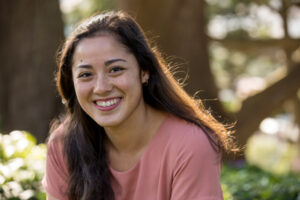
2018: age 20
I am entering my final year at the University of San Francisco, where I study Performing Arts & Social Justice. I remember how terrifying it was to transition to this major given that I had a lot of insecurity and doubts about pursuing a career in the arts. However, the inspiration and fulfillment I receive from my supportive group of peers and faculty have secured my decision that this is where I belong. This past semester has re-opened doors for me in terms of artistic collaborations, performance opportunities, and work experiences guiding me towards a future I’ve always wanted but didn’t believe was possible; I am overwhelmed by the vast range of possibilities for a career in the arts. Needless to say, I am eager to move forward with this path and infuse my greatest passions into the work I do here at USF and elsewhere.
What I’ve learned throughout the year is that dance serves a much greater purpose than just a technical art-form staged for performance. It serves as a model for education, a form of socio-political commentary, a therapy for healing the emotional body, a bonding experience between strangers, and a way of establishing oneself in relationship to others. Surely, there are plenty more purposes for dance, but these have been an integral part of my experience over the past year and have shown me that dance can be as powerful off-stage as it is onstage. A lot of my time in school is spent discussing and investigating this off-stage aspect of dance: How can we use creative movements to conceptualize academic curriculum? How do politics and societal issues manifest in our movements? How and where does the body hold onto emotions? What do our gestural and habitual patterns of movement tell a story about what’s going on around us? For me, these questions bring up the more interesting aspects of dance: relational, societal, and emotional ways of relaying and interpreting movement. I am interested in how these aspects are interconnected and how they can help us understand the world through dance and movement.
Aside from that, I am currently working with Jennifer Bury, a movement therapist in San Francisco, from whom I hope to learn about the functions and practices of somatic-psychotherapy through Gestalt therapy, Bartenieff Fundamentals, and Body-Mind Centering. She and I are currently working towards creating a workshop together that will take place here in San Francisco during the fall. In the meantime, I am just trying to understand the essence of movement therapy and build up a knowledge base for later when I graduate and pursue this as a career. With that, I would like to return to something I wrote in last year’s update which was, “It seems that I have only scratched the surface in my pursuit of dance, and the next few years will be defining in new ways as I explore dance more deeply.” I can say now that I have made a solid dent in my pursuit of dance and I am confident that it will continue to shape itself during the next year leading up to graduation.
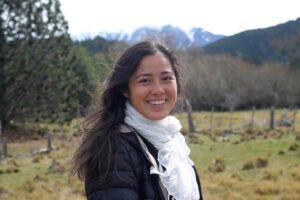
2017: age 19
I walked into the dance studio of my college on the first day of classes, nervous about what would happen next. I had not danced in six months — would I twist my ankle during the first combination? Would I even be able to balance on one leg anymore? Self-doubt rushed into my mind as I tediously did some stretches before class. I didn’t know what to expect of my body or how it would react to the experience of dancing again. A few minutes later, I was warmly welcomed by my modern dance teacher, Katie Faulkner. She shook my hand in such a way that I instinctively knew she would be very important in my growth as a dancer and a person. Her encouragement was the one thing that kept me coming back to class week after week — she was the first person to believe in me in a long time.
I don’t think I ever felt as liberated as I did after those classes. I always walked out with euphoria and lots of questions on my mind. What does this mean? Should I start dancing seriously again? Do I just keep it as a side hobby? Should I venture out to other studios? Maybe I can do a minor if I work things out with my major (International Studies)? It seemed like a small thing, walking out of dance class high off movement, but it sparked a feeling deep inside me — one that I missed dearly and wanted back more than anything.
However, I silenced that feeling for the first half of the year, only focusing on my major, which I thought would be secure, commendable and expected of me. I could not grasp the idea of going to a private university (and spending thousands of dollars I don’t have) to study anything else but International Studies. I was there on scholarship and felt that I needed to earn a degree that guaranteed money, respect and a job. So, of course, dance took the back seat until I reached a point that broke me into pieces and forced me to reconsider everything.
My second semester was awful. I spent months in emotional and mental darkness, becoming less and less recognizable to myself, losing interest in everything that once mattered to me. I was convinced I had depression and anxiety and nothing could cure it. I hated my classes; I felt so pressured to continue faking my interest in them. I skipped dance classes. I couldn’t sleep at night. I avoided people. The only person I reached out to was the one who believed in me. I sat down with Katie and told her everything. I told her how I was feeling, why I was not coming to class anymore. I told her about my major and how unsatisfied it left me. I told her about my dreams, fears and doubts about dance. What she said to me next was the most comforting and enlightening thing I had ever heard, and drove me to this conclusion:
Pursuing an education in dance offers experiences, lessons and challenges that no other major can offer. In fact, the skills and tools you get from studying dance give you the freedom to take on various jobs, depending on your interests. It cultivates creativity, feeds curiosity, and creates a mind-body connection that makes you a wholesome, life-long learner. Yes, there is risk and maybe not much money, but exploring everything about one’s passion is an invaluable thing — it makes every day, every assignment, and every class worth it. There is something so special about the arts that other academic careers cannot provide (for me at least): that feeling of liberation, euphoria and endless curiosity.
As my first year of college came to an end, I finally knew what I had to do. I switched my major to the Performing Arts and Social Justice with a concentration in Dance, dropped International Studies like a hot potato, and created a plan for the next two years that is fully committed to dance. I felt like a new person. The heavy pressures and expectations lifted off my shoulders with ease. I stopped feeling depressed. I could finally sleep at night. I smiled and laughed and came to peace with certain self-truths that I was denying for so long. I could finally breathe.
I look forward to seeing where this new path takes me, and I hope to discover more and more about life and myself through dance. It seems like I have only scratched the surface in my pursuit of dance, and the next few years will be defining in new ways as I explore dance more deeply. For now, I will be heading down to Argentina in the fall where I will learn how to tango and spend time exploring the world with my new outlook on life and learning.
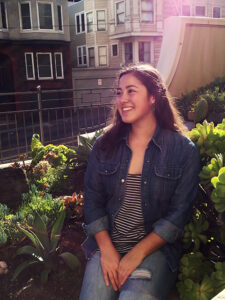
2016: age 18
It is hard for me to put into words where dancing fits into my life now, but it is simpler to say that I have taken a break from dance. This choice was again for the sake of my health, but this time, for my mental health.
I traveled to Germany last summer for the Dresden Ballet Intensive at the Palucca University. I was so ecstatic about traveling and dancing, since it has been my dream since childhood to do both at the same time and experience such an exhilarating dynamic. And the excitement showed, in my face, in my movements, in my breath; I was sincerely happy! I took classes from some of the most talented European dancers around, and even got the chance to take a Forsythe-inspired class from one of his dancers, Ana Presta. It was another world there. The nagging schoolwork thoughts dissolved into my sweat, the anxiety I had been hoarding left through my breath, and the pressures of my own expectations danced right out of my head.
Fast forward to January 2016, I spent every day in an emotional wreck. Nonstop tears and heaving sighs were poisoning my mind to believe that I have no means to dance and I should just give it up. Who was I trying to take on the world of dance, a place filled with endless talent that I cannot compare to? Am I just dancing because that is what I’ve been doing for the past 13 years and have nothing else to pursue? Do I really love dance, or just like it? Like any bad relationship, I decided we needed to take a break.
Of course, giving up dance is a temporary solution. I need time to think. I need to figure out what I was meant to do on Earth and if dancing fits into that vision. I had always believed it did, because of habit. But dancing should not be merely a habit; it deserves passion, curiosity, focus, creativity, emotion, and so much more. I felt so undeserving to dance, so inadequate of what it demands, that I simply could not bear to do it any longer until I pulled my life together. I am not able to offer dance these things right now, and I will wait until I can. Then, I will return to the beautiful art form that it is, and give it everything I’ve got.
I will be moving to San Francisco in the fall, where I will hopefully start dancing again. Until then, I will be taking care of my mind and body, and resolving this messy breakup with dance.
2015: age 17
My story did not end where I thought it would. I thought I would return to dancing with optimal health and a renewed spirit in the fall, but, it took me much longer to get to that place. Throughout the school year, I did not belong to any studio in particular but rather studio hopped to take the best classes I could find. Really, I just took open classes all year long. There are benefits to this: meeting new dancers regularly, choosing when to take class, and taking from new teachers. For a while this routine satisfied my dancing needs and I found it exhilarating to meet so many new people in the dance world. However, it was only a matter of time before I grew stagnant in progression and felt stuck in a rut. I was not improving the way I wanted to and I felt constantly overstressed during class from working so hard. Teachers noted that my upper body was very stiff and I needed to relax more. But, I just pushed on, working my muscles to extremes that were unhealthy and, ultimately, unproductive.
The other downfall to being a wandering dancer was that all the pressure to challenge myself was in my hands. Open class doesn’t offer the personal attention I needed to improve. So, sometimes I managed to motivate myself in class, while other times I felt terrible about my technique and couldn’t look in the mirror any longer. I was mentally and physically beating myself up with the stubborn hope that that would be the solution. If only I knew what I was getting into.
My physical health started draining. Surprisingly, I had not yet fainted or injured myself, but it took getting to such a crucial state for me to realize I will not be dancing much longer with the way I treat myself. I had become so self-critical nothing seemed to be good enough anymore (even if it was!). I was my biggest critic, worst enemy and toughest teacher.
But everything turned around very quickly. I did whatever it took to regain my health so I could dance again, and that happened easily with lots of cake and sweets. Lots of it. As good as it was for me to gain weight again, I hated the person I was becoming. Looking in the mirror brought me to tears because I felt like I was losing everything I had worked so hard for. I thought I was losing my integrity, my strength and my beauty. More so, I was scared beyond belief what it would be like to dance in this new, unfamiliar body. So I tried it out.
At first it was very uncomfortable. I couldn’t move as freely as before, I felt heavier, and I furrowed my brow at everything I did. I was still the same harsh critic, just in a bigger body.
I decided to try something new for once: I looked in the mirror and admired what I could. I touched the muscle in my legs, felt my arms, twisted and turned to see all angles of my being. I complimented myself and smiled at what I saw. Yes, I felt pretty foolish, but these moments of self-love are what changed me. Dancing started becoming more enjoyable because I only focused on loving it. I became more comfortable with how I move and realized how powerful and strong my body really was. Most of all, I was finally thankful for my bods abilities in dance because those are specific and special to me, no one else. I am beautiful when I dance, and I know it.
No, I cannot do 32 fouette turns or hold my leg up by my head, but I can move in ways that others can’t! I realized it’s not about being able to do it all or doing it perfectly; is about doing what you can do BEST. Dancing is a personal art; you do it however it fits you naturally.
Now, I dance with ease. I practice loving myself daily and admiring all the great things I can do. And in my eyes, this is the greatest improvement I have made all year long.
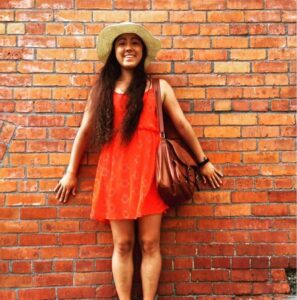
2014: age 16
I had a surge of motivation in the winter time and was craving more out of dance. I started working harder during class, doing strengthening every day, routinely jogging for cardio endurance and becoming very fit in the process. This lasted until the end of June, and my body was becoming a strong lean machine, or so I thought. I actually started to over-train too much and did not allow my body to rest, resulting in a major fallback for my dancing. It got so bad to the point that I was restricted by my doctor to stop dancing for a while until my body regained its normal state of being. To me, not dancing for several months sounded like torture. But I realized that if I wanted to keep dancing, I must take a break and rejuvenate. So I did. I spent my days stretching and holding myself back from going to the studio. It was a lot harder than I expected!
Eventually my body started to heal naturally, the rips and tears in my muscles were mended, my energy level rose, and my body was able to move again. Once I was allowed to take a dance class, I went in fearing that I had lost all that I had worked for. But to my surprise, I did not lose anything. I gained instead. I realized that I had been abusing the art of dance by treating it as only a physical sport. I had lost my connection to artistry and passion by becoming blinded by my fitness goals in dance. Taking that first class brought me tears of joy because I finally had understood the blessing I have been given: the ability to dance. Not many people have this blessing, and it makes me appreciate the art all the more. Now, every time I step into the studio, a sense of gratitude flows through me and I enjoy myself when dancing. This has brought me to a stronger sense of my artistry and passion for dance.
2013: age 15
This past summer at the San Francisco Conservatory of Dance has really made me interested in the diversity of dance and I’m eager to learn more and more. I’m currently very invested in dance and my growth in it, and hopefully will continue that through a professional career. I would say I am totally in love with dance, and it continues to be something I want to do!
The only thing that scares me is college and dance and how that all works out.
~~

